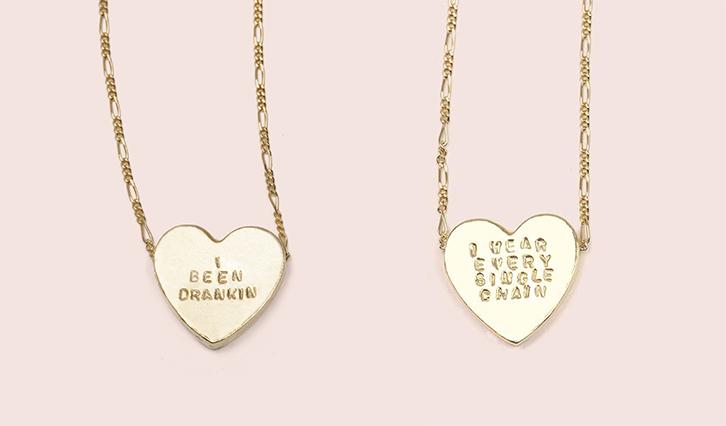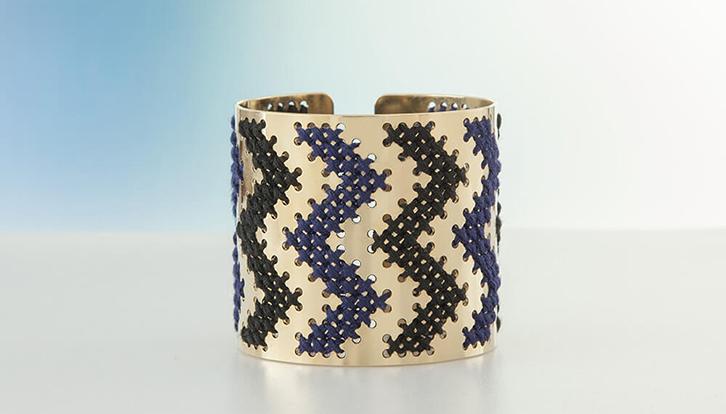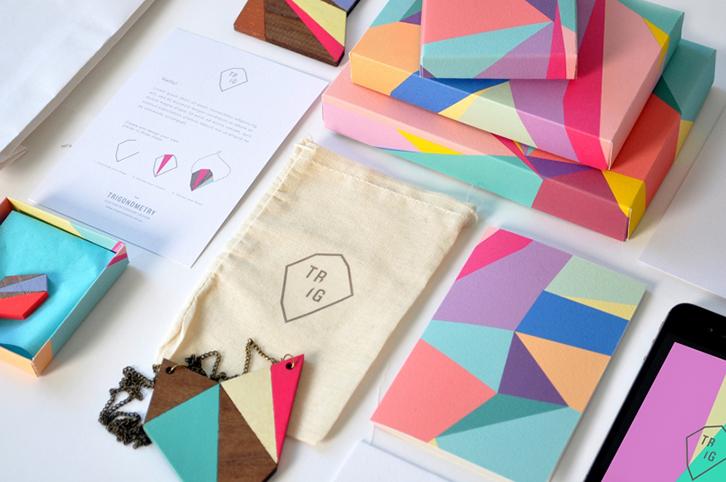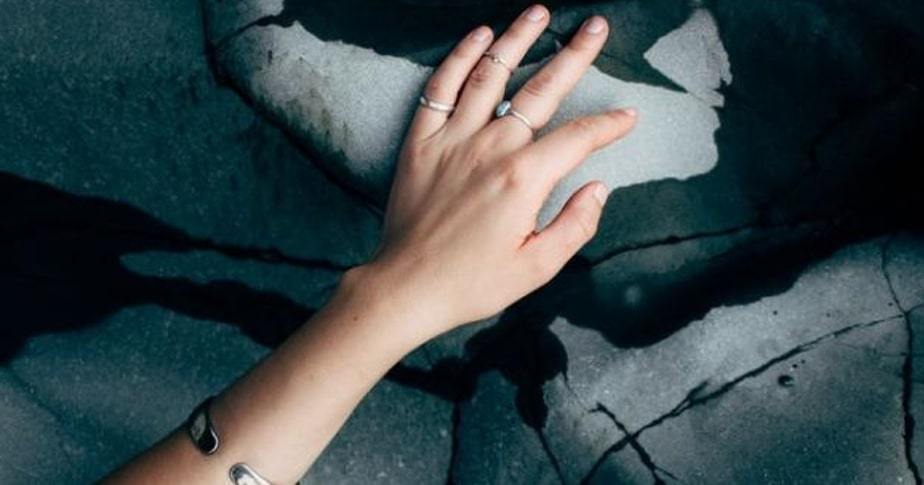After college, I designed textile necklaces as a side gig to my creativity-sapping day job. Jewelry making was good busy work for idle hands. But when my handcrafted masterpieces started to garner repeated compliments from friends, I wondered, "Could my hobby become a legitimate business?"
Jewelry making is a viable low investment business for hands-on creatives, but crafting skills aren't required. Maybe you're the technical type instead, looking to learn a new trade like fine metalworking or precious gemstones. Or, perhaps you're DIY-stunted but have an incredible online business idea based on an untapped audience.
Whatever your motivation or skill level, starting a jewelry-making business comes with its own set of considerations and complications. For one thing: It's crowded out there.
In the U.S., alone, the jewelry industry generates a hulking $70 billion dollars yearly in sales, with the lion's share in fine jewelry. Talk about bling. It's a saturated market but there's still wiggle room for newcomers with a new niche or fresh take to an old school craft.
If you want to know how to make jewelry into a profitable business, this post is for you. We'll explore jewelry making businesses from conception and design to production and marketing. This go-to guide includes advice from the pros, tactical takeaways, and examples from established Shopify stores.
Shopify Academy Course: Sell Your Homemade Goods Online
Have a product you’re ready to sell? The Kular family shares their experience building a business around mom’s recipe book. From selling one-on-one to reaching the aisles of Whole Foods.
Enroll for freeTable of Contents
- Starting a jewelry business: Finding your angle
- Production and materials
- Equipment and tools
- Education resources
- Workspace and team
- Product photography for jewelry
- Building online storefront
- How to market your online jewelry business
- The silver lining
Starting a jewelry business: Finding your angle
One of the first questions to ask yourself is: fine or fashion? Or maybe your interest lies somewhere in between. Each category has its own materials, production processes, price points, and customer profiles:
Fashion or costume jewelry is:
- Trendy
- Made of inexpensive metals and materials (bead, wire, plated metal, plastic, synthetic gems, etc.)
- A lower price point, sometimes mass-produced
- For the everyday or trendsetting customer
Example: ribbon choker with plated silver pendant.
Fine jewelry is:
- Made with precious and semi-precious metals and gems
- A higher price point
- Made with excellent craftsmanship
- For the luxury/wedding/special occasion customer
Example: diamond engagement ring.
Other/in-between:
- This category covers everything else from mid-range materials (or high-low mix of textile, metals, gems, wood, 3D printing, acrylic, etc.) to jewelry defined as art (collectible, ooak) or craft (highly skilled craftsmanship)
- Emphasis on design and uniqueness
- Price point varies but usually mid-range
- Occasion/statement, design-savvy/collector/gift-giving customer
Example: structural laser cut acrylic statement necklace.

Once you've narrowed down the broad category for your jewelry business, it's time to carve out a niche for your products. Start by defining your ideal customer (classic, trendsetter, brides, socially conscious consumers, etc.), and decide whether your products are occasion-specific (wedding, party, everyday, etc.) This will determine how you market them to your audience.
Trends
Researching trends is one way to determine (and validate) your chosen direction. Read fashion and jewelry blogs daily to stay on top of trends for each upcoming season.

From Google Trends, you can see broad global search for a particular term. Here's one good example of a current upward trend in jewelry:
Alternately, you might offer a customizable experience (engraving, etc.), take an ethical stance, or cash in on memes or pop culture references.

But you don't have to just follow trends; you could also use your jewelry business to start them. That's what Biko founder and designer Corrine Anestopoulos did, launching her collection based on personal style. "Somehow I felt like just by fluke I found a market for something new without meaning to, but it was just my taste," she says.
"In the beginning, I was doing a brassy finish. Nobody else was doing that," Anestopoulos says, noting that shiny silver was the trend at the time. Now, her collections evolve with trends in the industry every year, though the common thread is a recognizable look that defines her brand, and secures repeat business.
"I call my aesthetic 'modern nostalgic.' I used to work with a lot of vintage found pieces, mostly pendants that were from places in Africa or somewhere in India—old pieces that had a story to share," says Anestopoulous. "I still try to stay true to that when I'm designing, but lately I'm leaning more towards a few more modern minimal pieces. That's also what's trending, but at the same time, I like to think I'm doing it in my way."
Finding design inspiration
Success as a newbie in any facet of the fashion industry depends on strong aesthetic, unique design/product, and consistent branding. Before working with a designer to develop your branding and before designing individual pieces, run through a few exercises to define your overall signature.

Depending on how you like to get inspired, you may set up Pinterest boards, design your own digital mood boards, or even assemble inspiration physically on a bulletin board or in a sketchbook.
Clip ideas from fashion and jewelry blogs. Collect images, colors, and textures from nature, architecture, fashion, or travel, and then identify themes that emerge. Never stop being inspired, says Anestopoulous. "I'm always drawing inspiration, collecting inspirational images, no matter where I am."

Branding
Once you've established your products' aesthetic and nailed your customer profile, it should be easier to identify an overall look that will define your brand.
On the low-cost end, you can set up a basic Shopify store with a free theme and develop the logo yourself using a free online logo-maker. Keep in mind that you'll still want to reserve budget for professional product photos. We'll discuss the importance of photography for jewelry later in this post.
For larger budgets, work with a designer to translate your vision into a full branding package for your business—from the logo and website to packaging and marketing materials. Peruse the portfolios of Shopify Design Experts to find a designer whose work resonates with your tastes.

Remember, branding is more than just the look of your brand. It also encompasses your voice, vision, and story. Fashion purchases are often emotional, and emerging brands can win customers by connecting on a personal level. Tell your story through your about page, inject yourself into your social media posts, and share the process and inspiration behind your designs.

For Cred Jewellery, ethical practices and materials are at the core of the brand. The copy on the site repeats this message consistently. Phrases like "fairtrade," "lab-grown," and "ethical" are sprinkled throughout.

Product design
Accurate sketches or 3D renderings of your designs are necessary if you're hiring assembly staff or outsourcing to a manufacturer. There are several options, depending on your skill level and budget:
- Manual design tools. Pencils, sketch paper, jewelry design templates; for bead and wire jewelry, use a bead design board ($).
- 2D or 3D design software. Photoshop, Illustrator, GIMP, Pixlr, Inkscape, DrawPlus (free to $$).
- Jewelry-specific design software (best for fine jewelry). JewelCAD, Matrix, Rhinojewel ($$$).

Production and materials
How you'll develop your products—by hand or in a factory, at home, or outsourced—depends on the complexity of the design, price point, materials, and skill level. Let's break it down into three core categories:
Production: fine/art jewelry (handcrafted, custom, and one-of-a-kind)
Handcrafting jewelry can be one of the most involved yet personal and versatile of the production methods. Depending on materials and design, some methods of jewelry production require specialized training/certification and expensive equipment. These methods include:
- Soldering
- Silver/goldsmithing
- Casting
- 3D printing
- Laser cutting
- Leather tooling
- Weaving
- Gemstone setting.
If you're not sure the route you want to go, consider starting with free online classes. Once you know which area you want to study, you can invest in a paid option to further your skillset. We'll list a few great options in a bit.
Production: fashion/costume
Handmade costume jewelry often involves the assembly of existing elements—chain, wire, beads, cast pendants, etc.—and doesn't require special training or equipment beyond pliers, jewelry hammers, glue, and wire cutters.
This type of business is easier to scale, as you can purchase elements in bulk and templatize assembly to outsource it to interns or staff.
Production: outsourcing & fulfillment
Rather than making the jewelry with your own hands, you can have your designs manufactured by someone else. This isn't ideal for fine, custom, or OOAK jewelry, but it can be cost-effective for fashion jewelry produced in larger quantities. There are two main options for outsourcing:
- American/local manufacturing. Higher cost, less choice, "made in America/made local" appeal, faster shipping times, simpler communication, easier to verify reputation. (Find a manufacturer: Makers' Row, MFG.)
- Overseas manufacturing. Lower costs, usually more options regarding materials and process, potential communication barriers. (Find a manufacturer: Alibaba.)
The most hands-off production method involves sending your designs with Oberlo or Modalyst, or a print-on-demand app, Printful. Your original designs are recreated in stainless steel, wood, plastic, gold, and silver and shipped directly to your customers.
Equipment and tools
There are several online resources for wholesale jewelry making equipment, tools, and supplies including precious gemstones and raw metals.
Get started here:
- Wholesale Jewelry Supply Co.
- Fire Mountain Gems (Swarovski crystals, pearls, unique beads)
- Rio Grande (metalworking equipment and supplies)
- AliExpress and Alibaba
- Gem Select (wholesale precious and semi-precious stones).
- Beads.US
- JewelrySupply.com (displays)
Gillian Johnson of Hawkly jewelry relies heavily on word-of-mouth when it comes to her wholesale suppliers. "Don't be afraid to ask other designers where they find their supplies," she says.
She also attends trade shows and industry events to continue to expand her network and discover new materials. "My favorite place to source the newest stones and silver findings is the Tucson Gem and Jewelry Show," Johnson says. "There are thousands of vendors from all over the world."
Education resources
If you elect to learn how to make jewelry via a specialized skill like gem setting, there are plenty of jewelry education resources, including formal classes and online tutorials. Look for local workshops and programs, or start with these online resources:
- The Best Jewelry Design Schools in the U.S.
- American School of Jewelry
- Jewellers Academy
- Howcast: How to Make Jewelry (Video Tutorials)
- Craftsy (Online Classes)
- Annie's Craft Store (Online Classes)
- Beaducation
- 3DM Jewelry Design Studio
- Metalwerx
- At the Bench
Workspace and team
If you elect to make the jewelry in-house, you'll need a workshop space for you and your team. When setting up this space, consider the following:
- Maneuverability. Consider the flow of the space, especially if the assembly has multiple steps—do you move from one station to the next in a logical sequence?
- Safety. Some chemicals or tools involved in jewelry making require proper ventilation and safety precautions.
- Storage. Well-organized multi-compartment storage is essential for small parts.
"A jeweler's bench, a flex shaft, and your safety would be the most important considerations," Johnson says. "The flex shaft is a wonderful and versatile tool that you can use for drilling, finishing, and polishing your pieces." She also advises using a face mask and safety goggles—and for those with long hair pull it back so it doesn't get caught.
If your production team is larger or your requirements are a little more complex—as with metal work or silversmithing workshops—consider commercial space outside of the home. If it's out of your budget at launch, look into co-op studio space or share the costs of space and equipment with other creatives. Johnson splits her studio with two other businesses.
Space sharing also helps combat entrepreneur isolation, something Anestopoulos is familiar with herself. "After doing Biko full-time for a while, I ended up working at American Apparel once a week just to not be lonely at home in my studio, to meet people and get out in the world."
Hiring
Anestopoulos now has a rotating team of part-time interns and assembly staff. As you scale your jewelry business, determine the parts of the operation you enjoy most and tap into your own strengths. Hire around those to fill in the gaps.
Anestopoulos reaches out to local universities with renowned fashion communication programs to find her interns. "I don't ever look for anyone who's interested in design; what I need is someone to help me free up my time so that I can be designing more," she says. "I always look for people interested in the management side of running a fashion business."
Not ready to make a full-on hire? Start by using a virtual assistant service to alleviate some of the mundane aspects of the business.
Product photography for jewelry
We've said it many times before: Product photography can make or break your online store. In many cases, with a very simple lighting setup, you can achieve great DIY on-white photos of your products, even with your smartphone.
Jewelry, however, can be a little more challenging due to its tiny details and reflective surfaces.
"Don't skimp on photography," Anestopoulos says, even if you're on a budget. A professional photographer is skilled at making models feel comfortable and setting up complicated lighting. Other additions to your photoshoot team include stylists, makeup artists, and assistants. While working with skilled people will yield better results, it doesn't have to blow your budget.
Working with professionals includes the models in the shots too. Even if you have a friend who you think fits the bill, it's better to hire someone with experience. "People who are pretty in real life are not necessarily photogenic," says Anestopoulos. "Find a model who's actually a model."
"Real" models don't have to break the bank either. "There are always people who are looking to build their book or willing to work for product," she says. "It's not about taking advantage of people—you're all new to the game. If you get a group together, join forces, you can create magic together."
When shooting your photos, it's also important to offer two different views and angles of your products:
- On white. Minimizes distraction and highlights the details and different angles of the piece; offers a clean, consistent look on collection pages. (Note "white" can also mean another solid color or minimal pattern, like the marble in the example below).
- Lifestyle. Shows scale on the body and suggests styling ideas to customers (often great for upselling—you can nudge customers to combine multiple pieces into one look). These shots can work on product pages or in a lookbook, and are generally better for social media posts.

Looking for more ways to cut costs? Partner with complementary apparel brands to reduce photography expenses, or lend your pieces to fashion editors for photoshoots in return for product photos and exposure.
Additional reading:
- 10 Common Jewelry Product Photography Mistakes and How to Avoid Them
- The Beginner's Guide to Beautiful DIY Product Photography
Building your online storefront
Now that you have your products, branding, and photography nailed down, let's put it all together. In a matter of hours, you can set up a functioning ecommerce store on Shopify.
Consult Shopify resources to help with initial basic setup of your store. But first, sign up for a free trial:
Choose a theme that complements jewelry, putting the photography first. A Shopify Design Expert can help you tweak any theme, customizing it to your specific needs. Here are a few theme suggestions for jewelry businesses:

There are several add-ons in the Shopify App Store to improve the customer experience, reduce returns, and increase conversions. Here are a couple examples for jewelry businesses:
- Jewelfie. Allow customers to "try on" jewelry by uploading photos of themselves.
- Loox - Photo Reviews. Collect and add customer photos reviews to your site.
When it comes to the words on the page, you'll want to make sure it complements the visual aesthetic you've created with your design and product photos. Product descriptions should reflect your brand story and include details like sizing, materials (important for metal allergies), and, if applicable, material sources.

How to market your online jewelry business
Fashion and jewelry are heavily saturated industries—how will customers hear your voice above the noise? Where to spend your marketing dollars will depend on your product, audience, and budget, and may require some trial and error.
Anestopoulos put her money on PR and won. Noticing heightened competition in 2011, she invested in a rebrand and then hired a PR firm to get the word out about Biko. "It's expensive to work with PR but really, really valuable," she says. "It led to the best press I had to date. I sold $5,000 of one particular bracelet after it was featured."
Anestopoulous has also had success with Instagram influencers, bartering product for a dedicated post. Before reaching out, she says, be sure your Instagram curation is strong, so that influencers can see if your brand aligns with their own. "Creating a lifestyle around what you do is worth more than anything," she says.
If you're not sure how to do that with your Instagram curation, Anestopoulous has some advice. "I recommend posting inspirational images," she says. "After awhile, you'll realize that you're inspired by a similar stream of things and it tells its own story."
Tip: Try marketing apps like FourSixty's Shoppable Instagram & UGC to supercharge your Instagram account, and Kit to simplify Facebook, Instagram, and email marketing.
Pop-up retail and artisan shows
Anestopoulous's career began when she was invited to share a booth at a local clothing show to sell her creations. At the time, it was simply a hobby. She sold out on day 1 of a 2-day show, validating her designs and helping to turn her hobby into a business.
Small craft shows and pop-ups are not only a great way for emerging brands to gain exposure to built-in audiences and validate an idea—they're also important for established online businesses, she says.
"I do the One of a Kind Show twice a year, which is a good chance to get out and see customers in person, and get feedback directly," she says. "Sample sales are fun too; they're a good way to liquidate older merchandise and also invite people into your space and process."

Anestopoulous also grew her business initially through consignment and wholesale agreements, which she gained by approaching local retailers in person. Cold calling has a high rejection risk, but you just need one "yes" to get started.
Wholesale still accounts for approximately 65% of Biko’s overall business, and she now works with large retailers like Nordstrom, Simons, and Hudson's Bay Company.
The silver lining
"Jewelry is a very saturated market but I think the best way to stand out is to be authentic, trust your design instincts, and listen to your customers," says Gillian Johnson of Hawkly.
That said, many successful jewelry designers and merchants made their debut as a side gig. Small-scale production means you can get designing from your kitchen table. Go for gold!
Ready to create your own jewelry business? Start your free 14-day trial of Shopify—no credit card required.
Jewelry making business FAQs
Do I need a business license to sell jewelry?
It’s important that you consult local regulations governing small businesses. In many cases, though, you do not require a business license to set up an online store to sell your jewelry. In some regions, you may need a tax number, but this also may depend on how much income you are generating. Consult an accountant and/or business lawyer while in the process of establishing your business.
What are the basic tools for jewelry making?
This is dependent on the type of jewelry you plan to produce. You can start a jewelry business with almost no upfront cost or equipment if you take the print-on-demand approach. Fashion jewelry that involves mostly assembly of pre-made components may require simple hand tools like pliers. However, if you plan to start a fine jewelry business, you may require expensive and highly specific equipment.
How much does it cost to start a jewelry business?
Again, this cost is relative to the complexity of the production model you choose. You can start a business with a couple hundred dollars to cover basic supplies and make jewelry from your kitchen table. Or, you can invest tens of thousands in equipment and expensive raw materials and start a fine jewelry business from a dedicated studio.

